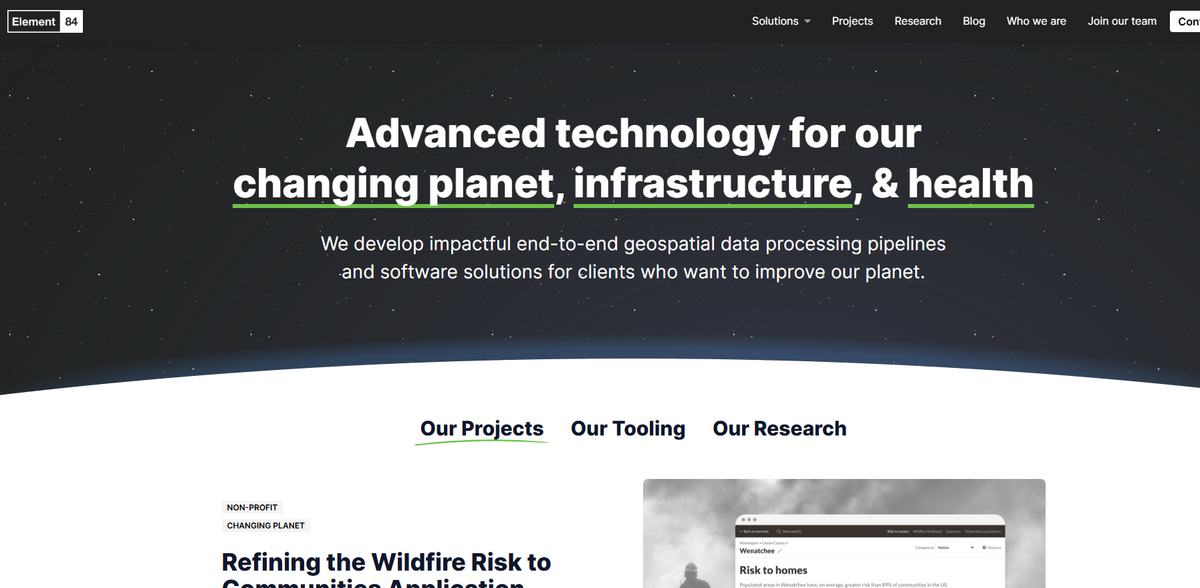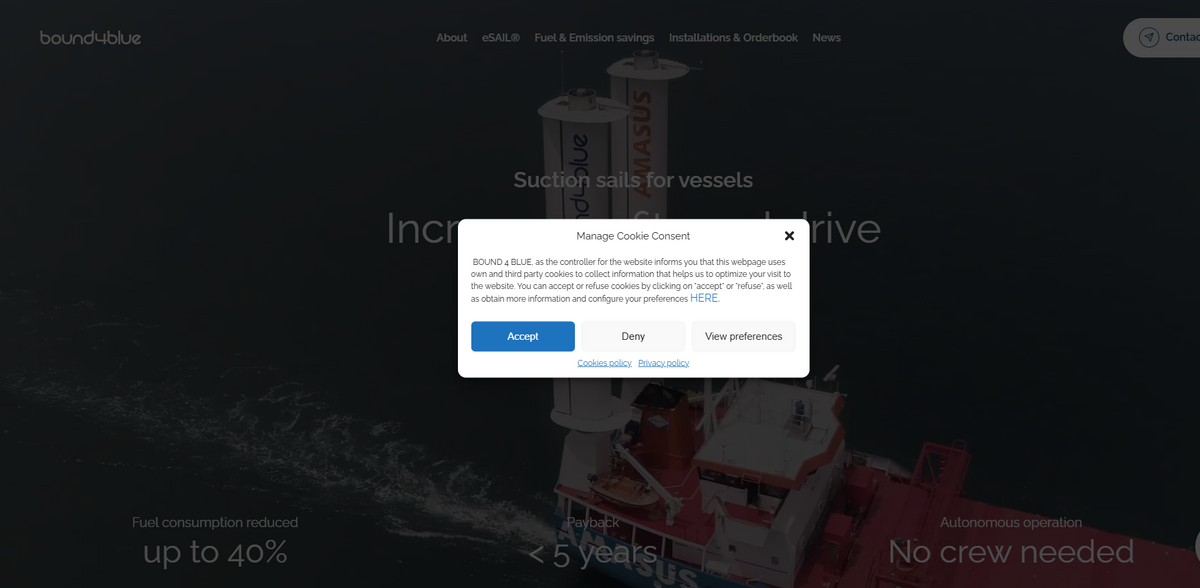What the Project Is: Driving Geospatial Innovation
Element 84 develops impactful end-to-end geospatial data processing pipelines and software solutions for clients who want to improve our planet. From refining wildfire risk assessments to scaling earth observation data and even processing data on satellite orbit, these projects reveal a commitment to better design, enhanced functionality, and cutting-edge technology. The range of projects showcases work on topics like wildfire risk for communities, auditing and discovery for eye-opening earth observation data providers, on-orbit processing innovations, and visualizing natural disasters with mesoscale imagery. It’s all about leveraging software engineering and analytics combined with modern design techniques to make a difference – pretty exciting stuff…
Main Benefit: Key Features and Achievements
- Refining the Wildfire Risk to Communities Application – Software Engineering & Analytics, coupled with engaging User Experience & Design.
- Inside the Audit and Discovery Process for Earth Observation Data Providers – a smart mix of Cloud Architecture & Data Scaling and Software Engineering & Analytics.
- FilmDrop Edge: On-Orbit – an innovative solution that uses on-satellite processing to reduce the volume of data required to be downlinked.
- Visualizing Natural Disasters with GOES Mesoscale Imagery – a clever small data pipeline displaying recent natural events alongside a simple vector layer.
Exploring the Wildfire Risk Application
The project titled “Refining the Wildfire Risk to Communities Application through Improved Design and Functionality” stands out as a dynamic solution focused on community safety and efficiency. With contributions in Software Engineering & Analytics and a strong emphasis on User Experience & Design, the application serves as a bridge between technical sophistication and user-friendly design. Visitors can explore details at its dedicated page, which highlights a journey of iterative improvements and clear design enhancements – a process that has been both meticulous and full of creative energy. The emphasis on improved functionality means that stakeholders receive accurate, timely data that could potentially mitigate wildfire risks for affected communities.
Audit Process for Earth Observation Data Providers
“Inside the Audit and Discovery Process for Earth Observation Data Providers” dives deep into the nuances of large-scale data management. Focused on Cloud Architecture & Data Scaling and Software Engineering & Analytics, this project unravels the complexities of auditing, testing, and verifying data sourced from earth observation instruments. The approach taken – methodical and analytical – ensures that the quality and integrity of data remain top priorities. Each step of the process is carefully designed to identify potential issues while scaling operations efficiently, keeping pace with the increasingly robust capabilities of space-based observation systems.
On-Orbit Data Innovation: FilmDrop Edge
FilmDrop Edge: On-Orbit marks a breakthrough in handling the flood of data produced by next-generation earth observation instruments. As satellites now offer even greater spatial and spectral resolution, the challenge becomes how to manage and transmit vast amounts of information. This project addresses that problem by employing on-satellite processing. The technique is designed to reduce the data volume that must be downlinked, ultimately streamlining the communication channel between a satellite and its ground stations. The on-orbit innovation not only simplifies data management but also ensures faster, more efficient delivery of critical information.
Project Impact and Sustainable Development Goals
- SDG 9: Industry, Innovation, and Infrastructure – Emphasizing robust, scalable cloud architecture and advanced engineering.
- SDG 11: Sustainable Cities and Communities – Enhancing community safety with improved wildfire risk solutions.
- SDG 13: Climate Action – Providing actionable data insights that can support responses to natural disasters.
- SDG 17: Partnerships for the Goals – Fostering collaborations in the fields of geospatial analytics and earth observation.
Visualizing Natural Disasters with GOES Mesoscale Imagery
“Visualizing Natural Disasters with GOES Mesoscale Imagery” presents a fascinating window into the practical applications of meteorological data in times of crisis. The project centers around the creation of a small but effective data pipeline that displays GOES mesoscale data – notably from events such as Hurricane Hilary – on a web map, paired with a simple vector layer for context. Through a blend of technical precision and creative visualization, the imagery helps in understanding the scale and dynamics of natural disasters. It offers a tangible demonstration of how raw data can be transformed into accessible visual content, making it easier for decision-makers and the public to grasp the complexities of rapidly evolving weather events. The project’s design smartly balances the technical needs of data processing with the human need for clarity in chaotic moments…





















